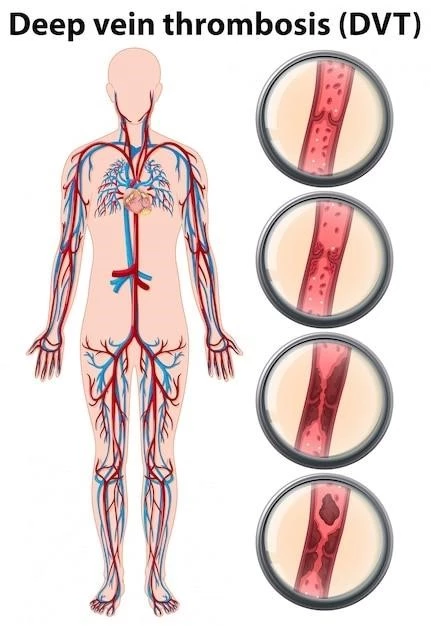Disease ‒ Leptomeningeal Capillary ⎻ Venous Angiomatosis
Leptomeningeal Capillary-Venous Angiomatosis, a rare disorder affecting the central nervous system, involves abnormal growth of blood vessels. It is caused by a genetic mutation leading to the development of venous malformations in the brain and spinal cord.
Symptoms of this disease may include neurologic deficits like seizures, headaches, visual disturbances, and cognitive impairments. Patients may also present with hemorrhages in the brain due to the fragile nature of the malformed blood vessels.
Diagnosis is usually confirmed through MRI findings showing dilated blood vessels and abnormal vascular structures in the central nervous system. Genetic testing can help identify the specific mutation responsible for the condition.
Treatment may involve surgery to address the abnormal blood vessels and reduce the risk of hemorrhages. Other options include medications to manage symptoms and monitoring for disease progression.
The prognosis for individuals with this condition varies depending on the extent of the abnormalities and the presence of complications. Early diagnosis and intervention can help improve outcomes and quality of life.
Overview of Leptomeningeal Capillary ‒ Venous Angiomatosis
Leptomeningeal Capillary-Venous Angiomatosis is a rare disorder that affects the central nervous system. It is characterized by the abnormal growth of blood vessels in the leptomeninges, the thin layers of tissue that cover the brain and spinal cord. This condition is caused by a genetic mutation that leads to the development of venous malformations in the brain and spinal cord, resulting in an intricate network of abnormal blood vessels.
The abnormal blood vessels in Leptomeningeal Capillary-Venous Angiomatosis are fragile and prone to bleeding, which can cause a range of symptoms and complications. These malformations can disrupt the normal blood flow and pressure in the brain, leading to neurologic deficits and other issues.
Individuals with this condition may experience a variety of symptoms, including seizures, headaches, visual disturbances, cognitive impairments, and motor deficits. The severity and presentation of symptoms can vary depending on the location and extent of the abnormal blood vessels in the central nervous system.
Diagnosing Leptomeningeal Capillary-Venous Angiomatosis typically involves imaging studies such as magnetic resonance imaging (MRI) to visualize the abnormal vascular structures in the brain and spinal cord. In some cases, genetic testing may be necessary to identify the specific mutation responsible for the condition.
Once diagnosed, treatment options for Leptomeningeal Capillary-Venous Angiomatosis aim to address the abnormal blood vessels and manage symptoms. Surgical intervention may be necessary to remove or resect the malformations and reduce the risk of hemorrhages or other complications.
Overall, the prognosis for individuals with Leptomeningeal Capillary-Venous Angiomatosis can vary depending on factors such as the extent of the abnormalities, the presence of complications, and the response to treatment. Early diagnosis and appropriate management can help improve outcomes and quality of life for those affected by this rare disorder.
Symptoms of Leptomeningeal Capillary ⎻ Venous Angiomatosis
Leptomeningeal Capillary-Venous Angiomatosis can manifest with a variety of symptoms related to the abnormal growth of blood vessels in the central nervous system. These symptoms can vary in severity and presentation, depending on the location and extent of the venous malformations.
One common symptom of this condition is seizures, which can be focal or generalized, and may occur due to the disruption of normal brain activity by the abnormal blood vessels. Patients with Leptomeningeal Capillary-Venous Angiomatosis may also experience debilitating headaches, which can be chronic and resistant to typical treatments.
Visual disturbances are another hallmark symptom of this disorder, often presenting as visual field defects, double vision, or other eye-related issues. These symptoms can impact a patient’s quality of life and may require interventions to manage effectively.
Cognitive impairments, such as memory problems, difficulties with concentration, and changes in behavior, can also occur in individuals with Leptomeningeal Capillary-Venous Angiomatosis. These deficits can affect daily functioning and may progress over time as the condition worsens.
In some cases, motor deficits like weakness, coordination problems, and gait disturbances can develop due to the impact of the abnormal blood vessels on the nervous system. Patients may experience difficulty with fine motor skills and coordination, affecting their mobility and independence.
Hemorrhages in the brain are a serious complication of this condition and can lead to sudden severe symptoms like severe headaches, neurological deficits, and even life-threatening situations. The fragile nature of the malformed blood vessels increases the risk of bleeding and requires prompt medical attention.
Overall, the symptoms of Leptomeningeal Capillary-Venous Angiomatosis can significantly impact the quality of life of affected individuals and may require a multidisciplinary approach to managing and treating the various manifestations of the disease.
Diagnosis of Leptomeningeal Capillary ⎻ Venous Angiomatosis
Diagnosing Leptomeningeal Capillary-Venous Angiomatosis can be challenging due to the rarity of the condition and the complexity of its presentation. Healthcare providers typically rely on a combination of imaging studies, clinical assessments, and genetic testing to confirm a diagnosis of this rare disorder.
Imaging studies play a crucial role in the diagnosis of Leptomeningeal Capillary-Venous Angiomatosis. Magnetic resonance imaging (MRI) is commonly used to visualize the abnormal vascular structures in the brain and spinal cord. The MRI findings may show dilated blood vessels, venous malformations, and other anomalies characteristic of the condition.
In some cases, additional imaging modalities such as angiography may be utilized to provide more detailed information about the extent and location of the abnormal blood vessels. Angiography can help healthcare providers better understand the vascular anatomy and plan for potential interventions.
Clinical assessments are also important in the diagnostic process for Leptomeningeal Capillary-Venous Angiomatosis. Healthcare providers will evaluate the patient’s symptoms, neurological deficits, and medical history to gain a comprehensive understanding of the individual’s condition.
Genetic testing may be necessary to identify the specific mutation responsible for Leptomeningeal Capillary-Venous Angiomatosis. Identifying the genetic mutation can not only confirm the diagnosis but also provide valuable information for family members who may be at risk of inheriting the condition.
Overall, a multidisciplinary approach involving neurologists, neurosurgeons, radiologists, and genetic counselors is often needed to diagnose Leptomeningeal Capillary-Venous Angiomatosis accurately. Early and precise diagnosis is essential for initiating appropriate treatment and management strategies for individuals affected by this rare disorder.
Treatment Options for Leptomeningeal Capillary ⎻ Venous Angiomatosis
The treatment of Leptomeningeal Capillary-Venous Angiomatosis aims to address the abnormal blood vessels in the central nervous system, manage symptoms, and prevent complications. The management of this rare disorder often involves a combination of medical interventions, surgical procedures, and supportive care to improve quality of life.
Surgical intervention may be necessary to address the abnormal blood vessels and reduce the risk of hemorrhages or other complications associated with Leptomeningeal Capillary-Venous Angiomatosis. Neurosurgical procedures such as resection or embolization of the malformations can help alleviate symptoms and improve outcomes.
In cases where surgery is not feasible or sufficient, medical treatments may be utilized to manage symptoms and slow the progression of the disease. Medications such as antiepileptic drugs may be prescribed to control seizures, while pain management strategies can help address chronic headaches.
Regular monitoring and follow-up care are essential components of managing Leptomeningeal Capillary-Venous Angiomatosis. Healthcare providers will closely monitor the progression of the condition, assess for any new symptoms or complications, and adjust treatment plans as needed to optimize patient outcomes.
Physical therapy, occupational therapy, and other rehabilitative interventions may be recommended to help individuals with this condition improve their motor function, coordination, and overall quality of life. These supportive therapies can enhance mobility, independence, and overall well-being.
Genetic counseling is also an important aspect of the treatment of Leptomeningeal Capillary-Venous Angiomatosis, especially for individuals with identified genetic mutations. Genetic counselors can provide information about the hereditary nature of the condition, discuss reproductive options, and offer support to affected individuals and their families.
Overall, the treatment of Leptomeningeal Capillary-Venous Angiomatosis requires a comprehensive and individualized approach to address the unique needs of each patient. By combining medical interventions, surgical procedures, supportive care, and ongoing monitoring, healthcare providers can help improve outcomes and enhance the quality of life for individuals living with this rare disorder.
Prognosis and Outlook for Individuals with Leptomeningeal Capillary ‒ Venous Angiomatosis
The prognosis for individuals with Leptomeningeal Capillary-Venous Angiomatosis can vary depending on several factors, including the extent of the abnormal blood vessels, the severity of symptoms, the presence of complications, and the response to treatment. While this rare disorder can present significant challenges, early diagnosis and appropriate management can help improve outcomes and quality of life.

Individuals with Leptomeningeal Capillary-Venous Angiomatosis may experience a range of neurologic deficits and symptoms that can impact their daily functioning and well-being. Seizures, headaches, cognitive impairments, and motor deficits are common manifestations of this condition and may worsen over time if left untreated.
The presence of hemorrhages in the brain due to the fragile nature of the abnormal blood vessels is a serious complication that can lead to life-threatening situations. Prompt medical intervention and surgical management are essential to address these complications and reduce the risk of further bleeding and neurological damage.
Despite the challenges associated with Leptomeningeal Capillary-Venous Angiomatosis, advances in diagnosis and treatment have improved the outlook for individuals affected by this rare disorder. Early and accurate diagnosis, followed by a multidisciplinary approach to care involving neurologists, neurosurgeons, genetic counselors, and other specialists, can help optimize outcomes and quality of life.
Treatment strategies focused on addressing the abnormal blood vessels, managing symptoms, and providing supportive care can help individuals with Leptomeningeal Capillary-Venous Angiomatosis lead fulfilling lives. Regular monitoring, follow-up care, and adjustments to treatment plans as needed are critical components of managing this complex condition.
Genetic counseling plays a significant role in the prognosis and outlook for individuals with Leptomeningeal Capillary-Venous Angiomatosis, particularly for those with identified genetic mutations. By understanding the hereditary nature of the condition and discussing family planning options, affected individuals can make informed decisions about their health and future.
Overall, while Leptomeningeal Capillary-Venous Angiomatosis is a rare and challenging disorder, advancements in medical care and treatment options offer hope for improved outcomes and quality of life for individuals living with this condition. By focusing on early detection, comprehensive treatment, and ongoing support, healthcare providers can help individuals affected by this rare disorder navigate their journey with strength and resilience.
